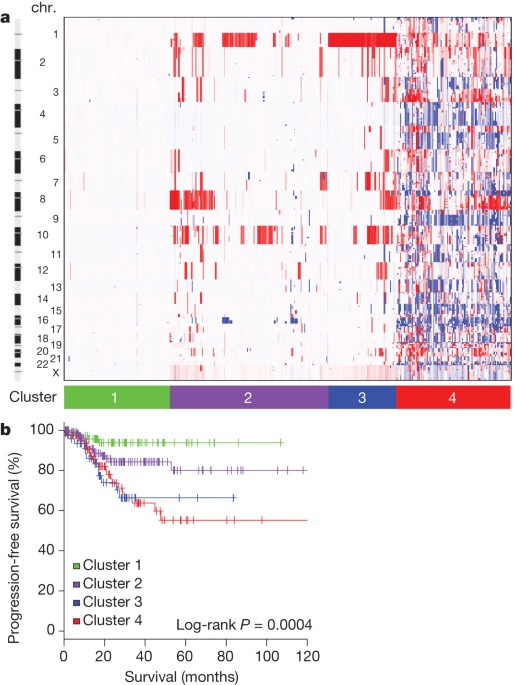Now, y’all probably wonderin’ what this “alpha beta ratio” is, especially when it comes to somethin’ like endometrial cancer. Well, lemme break it down for ya real simple like. This here “alpha/beta ratio” is somethin’ used in radiobiology. It’s a way to measure how sensitive certain tissues are to radiation, which is important when doctors use radiation to treat cancers. They measure it in Gy, which is short for gray, a unit of radiation dose. It’s all about understandin’ how different tissues and cancers respond to the treatment.
Now, for endometrial cancer, that’s the cancer that starts in the lining of the uterus, or the “womb,” as we call it in simple terms. This alpha/beta ratio tells doctors how well the cancer cells might take to the radiation. See, radiation is used to kill cancer cells, but it don’t just work the same on every cell. Some cells might be harder to kill than others, dependin’ on how they react to the radiation. That’s where the alpha/beta ratio comes in.
The idea behind this ratio is that there are two types of ways radiation can kill a cell: the first one’s called a “single-hit” type, and the second one’s a “multiple-hit” type. Think of it like shootin’ at a target. If you hit it once, you might not knock it down, but if you hit it more than once, then the target’s gonna fall down. Same with radiation—some cancers need a few hits before they’re truly damaged enough to die off.
For endometrial cancer, it’s said that most cancers that grow fast, like endometrial ones, have a higher “alpha/beta” ratio, which means they’re a little easier to treat with radiation. The ratio for these cancers is typically closer to 10 Gy. That means these fast-growing cells can handle a higher dose of radiation, and the treatment can be more effective.
70591-6/asset/15bc5d5f-6009-43b9-b552-2edf7cea20ed/main.assets/gr1_lrg.jpg)
But now, don’t go thinkin’ that all cancers are the same. Different types of cancers have different alpha/beta ratios. For instance, some slower-growing cancers, like those in the late stages, might have a lower ratio, closer to 3 Gy. These cells don’t divide as quickly, so radiation works a little differently on ’em.
Endometrial cancer patients, well, they’ve gotta get checked for all kinds of things to know how their body’s gonna react. Doctors look at certain markers like CA 125, which can be a better indicator for endometrial cancer compared to other conditions like abnormal uterine bleeding. If these markers are higher than normal, then it could be a sign of cancer. Now, don’t get me wrong, this isn’t a perfect science. It’s just one of the tools doctors use to help them make a diagnosis.
So, if we’re talkin’ about the alpha/beta ratio for endometrial cancer, we’re really talkin’ about how much radiation treatment these cancer cells can take before they start to die off. And that’s important ’cause it helps doctors figure out the best way to treat the patient and how much radiation they should give. But it’s not just about radiation—there’s a lot more involved, like surgery and chemotherapy. But radiation’s still a big part of it, especially when it comes to treating cancers like endometrial cancer.
For a better chance of survival, it’s always important for women to catch this cancer early. If they notice any symptoms, like abnormal bleeding or pain, they should get checked out by a doctor right away. Early treatment can make a big difference in the outcome.
Doctors also consider other things like how well certain receptors, like estrogen and progesterone, are expressed in the cancer. If these receptors are present, it might affect how the cancer responds to treatment, including radiation. And when we talk about treatment, let me tell ya, stereotactic body radiation therapy (SBRT) is somethin’ doctors sometimes use. It’s a precise type of radiation therapy, where they target the cancer from different angles to get a better, more focused dose. It’s a fancy way of sayin’ they try to get the radiation right where it’s needed, without wastin’ too much on the healthy tissue around it.

To sum it up, the alpha/beta ratio is a useful number that helps doctors decide how best to treat endometrial cancer with radiation. It’s all about makin’ sure that the cancer cells get hit hard enough to stop growin’, but not so much that the healthy tissue around ’em gets hurt too much. So, while this number is important, it’s just one part of the big picture when it comes to treating cancer. And, as always, the earlier this cancer is caught, the better the chances for treatment to work.
Tags:[Endometrial Cancer, Alpha Beta Ratio, Radiation Therapy, Cancer Treatment, CA 125, Estrogen Receptors, Stereotactic Body Radiation Therapy, Radiobiology, Cancer Diagnosis]








